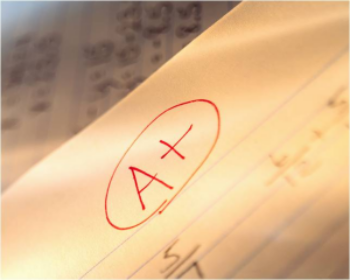
School administrators have to balance their effectiveness in multiple, and equally important areas within the scope of their roles as leaders. Managing the day to day operation of a school, including dealing with unforeseen issues, often leaves very little time for an administrator to develop his or her craft as an instructional leader and teacher evaluator. Additional challenges administrators potentially face are, 1) a large cohort of probationary teachers joining the faculty, and 2) changes to the evaluation process brought about by a mutual agreement between the school district and teachers’ union.
In the case of number one above, as I experienced working as a high school assistant principal for ten years, a large first and second-year teacher cohort means twice the number of evaluations. Most school districts, for obvious reasons, want their “prob 1” or “prob 2” teachers to be looked at carefully before they are given tenure status. In the case of number two above, when districts and unions bargain a change in the teacher evaluation process, it usually means more work for the administrator and added scrutiny for a teacher usually at the expense of the district; the district gives up something to gain the leverage of a more accountable evaluation process.
Below you will find seven best teacher evaluation practices for administrators. These will help you deal with limitations within any type of evaluation process.
- Understand the process. You must be versed in your district’s expectations. Find out what an effective teacher evaluation write-up looks like. Most school districts, for some reason, do not want to standardize their summary reports. Nonetheless, you must ask your Human Resources department, before you get underway, what would make for an exemplary teacher evaluation report.
- Know the contract. Don’t be afraid to do things not mentioned in the teachers’ union contract. Can you take notes as you visit the teachers on your list every week? Would this be considered an unannounced observation? If you can’t take notes of what you see in the classroom, then do so outside the room. Carry a small notepad and pencil and write two positives and one negative for every ten-minute walk-through visit for each teacher.
- Create a schedule. If you don’t include walk-through classroom visits on your calendar, your calendar will get filled-up with other things! Designate specific times and days each week to get out of your office and visit classrooms.
- Calibrate with other administrators at the school. Similar to number one on this list, you will want to be producing an evaluation report that is similar to the ones every other person on the leadership team is producing. Teachers will complain when an administrator on the team is overly descriptive or critical in their evaluation summary. Even though these are confidential, teachers compare “what they got” when they return to the trenches and can see which administrator is the “easy” one and which one is the “hard” one.
- Take scripted notes when you are doing a formal observation. The best way to take down scripted notes is to take your laptop with you when you do a formal observation. Scripted notes allow you to retain most of what was said and done in the classroom by the teacher during the lesson. Taking down what you believe is salient about the lesson is unfair to the teacher as you may not have given the observation enough of a look to make the best analysis of teaching.
- Always ask teachers who you believe will not perform well during a formal observation, perhaps because you have seen certain things already from your walk-through visits, to come to your office for a pre-observation conference. This is not a mandated part of the evaluation process in every school district, even though it is part of the clinical observation protocol. During a pre-observation conference, you and the teacher can discuss challenges the teacher perceives for the lesson, essentially enhancing the possibility of a better experience for the both of you.
- Do not go crazy on the post observation conference. The eager administrator tries to cover way too much ground during a post observation conference with a teacher. They seem to feel like they are doing the teacher a favor by bringing up every little thing they observed wrongly undertaken in the classroom. Give the teacher no more than three suggestions to work on before the next observation, i.e., something they can begin to think deeply about.

Thanks for explaining that effective teacher evaluator will take scripted notes and won’t be unfair to the teachers by only taking down what they deem salient. I’ve been interested in learning more about how the classroom walkthrough process because I need to choose a school for my daughter, and I want to make sure the teachers are properly evaluated. I’m glad I read your article because it was interesting to learn more about the practices that efficient teacher evaluations have.